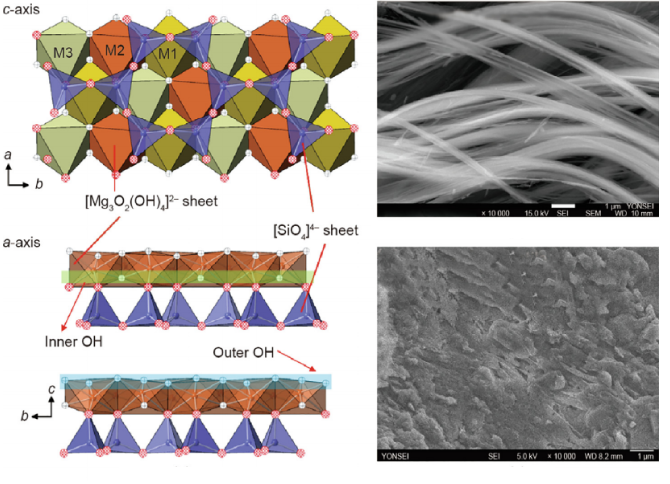"Carbonation of Chrysotile under Subduction Conditions”
- Authors
M. Kong, Y. Lee*
- Journal
Engineering
Vol.5, pp.490-497, 2019.06 - DOI
Abstract
In order to understand the role of serpentine minerals in the global carbon cycle, high-pressure X-ray diffraction (XRD) experiments were performed on chrysotile (Mg3Si2O5(OH)4) using carbon dioxide (CO2) as a pressure medium. Synchrotron XRD patterns revealed the formation of magnesite and high-pressure chrysotile after heating at 170 °C for 1 h at 2.5(1) GPa. The Rietveld refinement suggests that the unit cell composition of the original chrysotile changes to Mg2.4(1)Si2O5(OH)2.4(1) upon the formation of magnesite, which appears to be driven by the dehydrogenation of the innermost hydroxyl group, OH3, and the rearrangement of magnesium (Mg) at the M1 site, leading to the formation of metastable monodehydroxylated chrysotile. Metastable chrysotile is observed up to 5.0(1) GPa and 500 °C, which corresponds to the slab Moho geotherms for the South Sumatra and Ryukyu subduction zone. After recovery to ambient conditions, the characteristic fibrous morphology of the original chrysotile was found to have changed to an earthy form. These results can help us to understand deep carbon cycling along the subduction zones, and may prompt the design of a novel method of asbestos detoxification using pressure and temperature.












